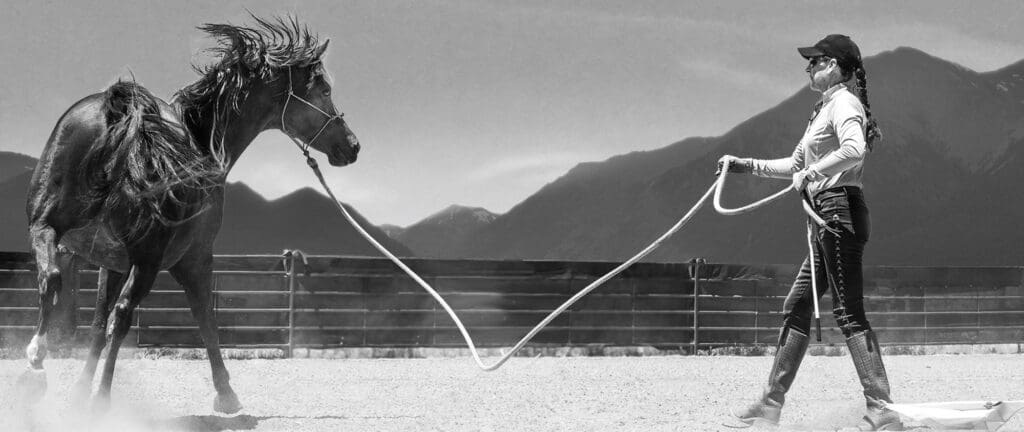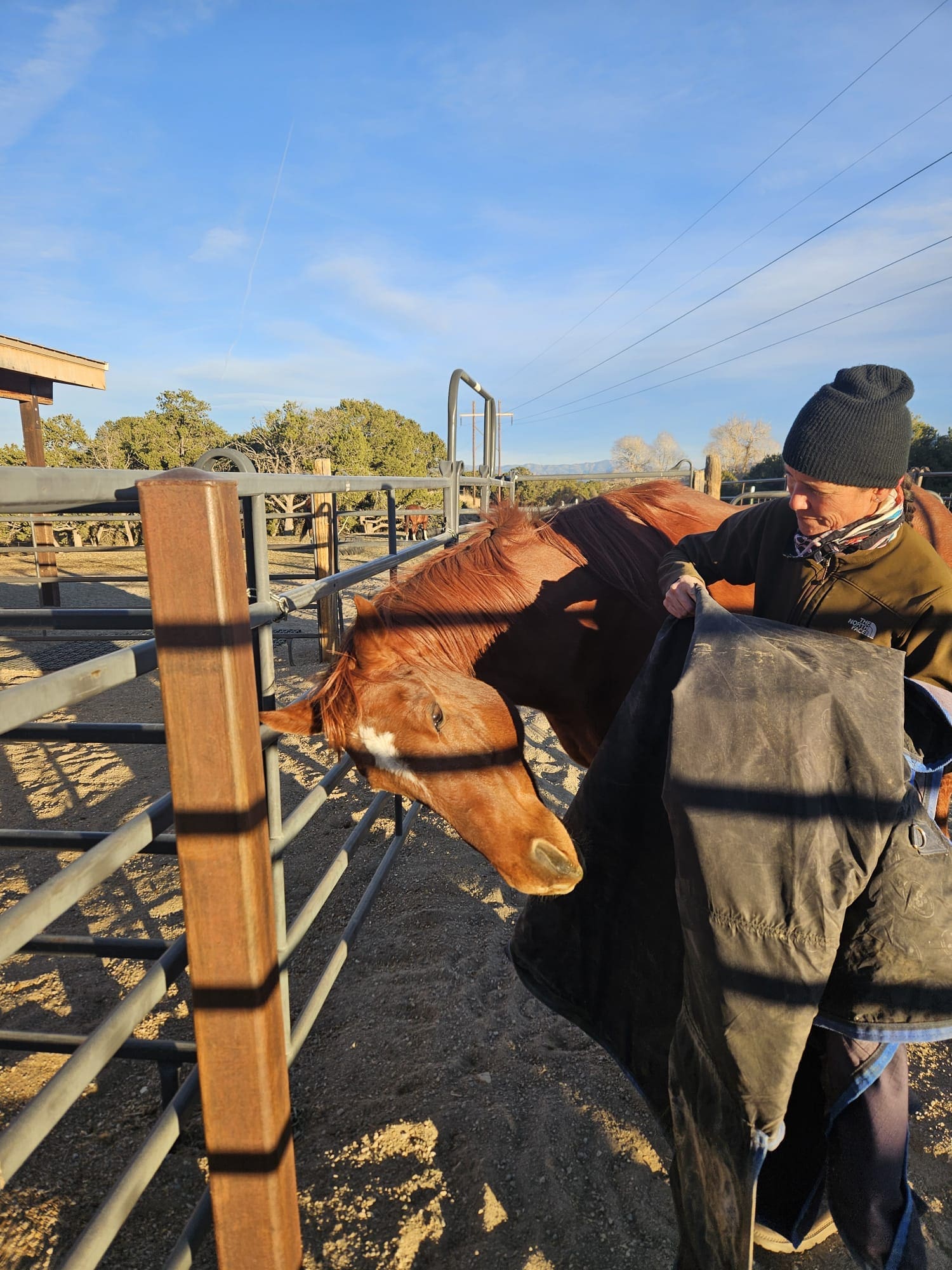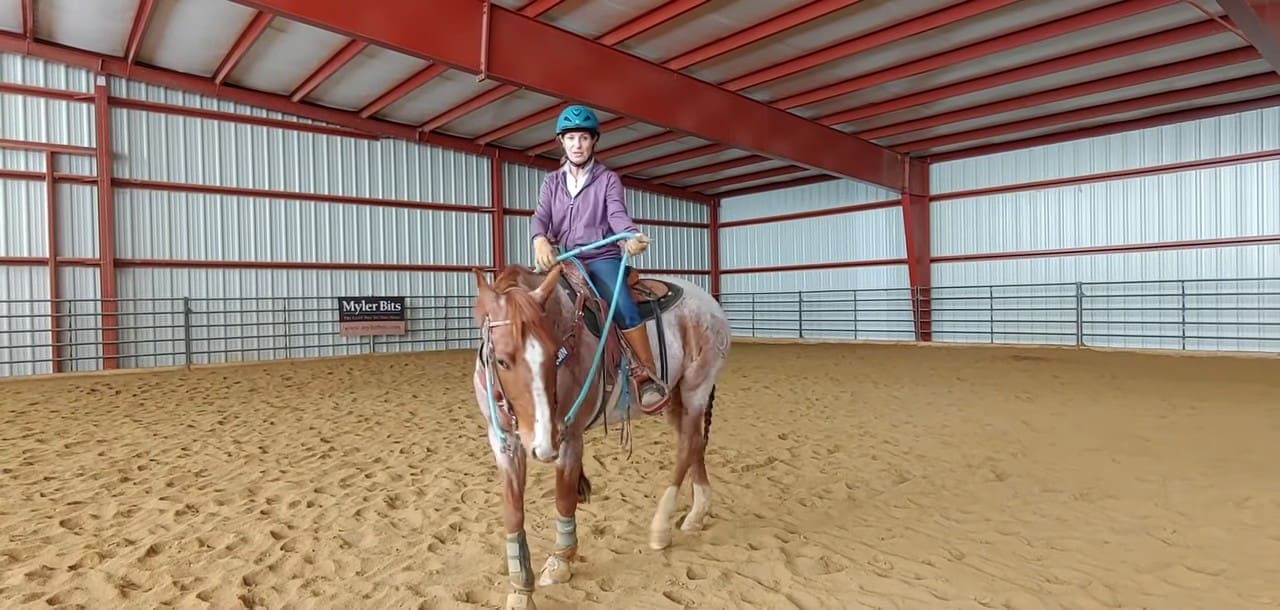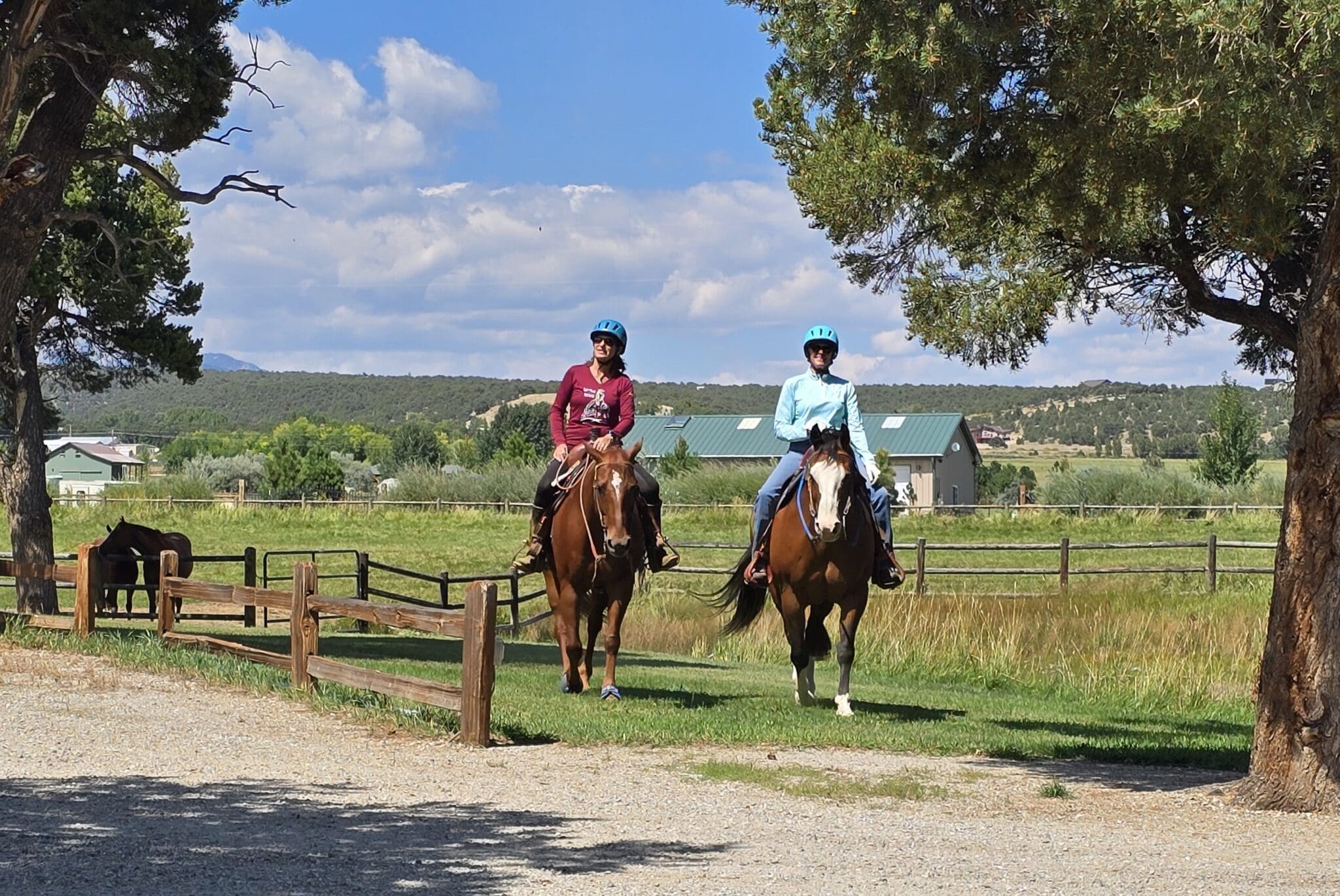

Horses are intricate and complicated animals and their views and perceptions of the world around them can be quite different from our own. Being prey animals and flight animals, horses are highly sensitive to all forms of pressure: physical, mental and environmental. They are lightening fast learners, which can make them very easy to train or un-train. Unfortunately, horses learn the wrong things just as quickly as they learn the right things and we have to take responsibility for that.
Horses learn by making associations between one thing and another. Sometimes they make intended associations, like, “When I feel the rider close her legs on my sides, I should move my feet faster.” The horse has learned to associate the movement of the rider’s legs with the movement of his own legs. But sometimes they make unintended associations, like, “When I buck, the rider stops me.” In this example, the rider has reinforced the horse’s bucking, and the horse now associates bucking with what he wants—getting to stop.
Inadvertent associations by the horse and learning the wrong things cannot always be avoided. Having a more thorough understanding of how horses learn, what actions on your part may reinforce a response, and what actions may discourage a response will help keep your horse learning the right things. A horse is always learning, for better or for worse, but the more you understand how your horse perceives reward, reinforcement and punishment and their roles in training the horse, the more effective you will be.
Just Rewards
It is far too simplistic to think of giving a horse a treat as a reward. Waiting for a horse to give the correct response and then giving it a food-based reward, is an example of “positive reinforcement.” A positive reinforcer is something that is added to the equation. In general, horse trainers prefer to stay away from food-based rewards since horses also establish dominance by taking away food from others. Also, while it may be quite handy for training tricks to a horse, offering a food-based reward loses its practicality when training complicated and intricate maneuvers while riding the horse. To me, a pet on the neck, verbal praise and letting the horse rest are far more effective rewards.
Because horses are sensitive animals that feel pressure quite keenly, horses can also perceive a release of pressure as a reward. This is known as “negative reinforcement,” because pressure is removed when the horse gives the correct response—apply pressure, wait for the correct response, then remove the pressure. The release of pressure is the reward and this turns out to be the most expedient and practical means to train a horse, because they are so very sensitive to pressure of all kinds. Contrary to what many people think, negative reinforcement is not punishment, in fact, reinforcement is the opposite of punishment (more on that later).
One of the biggest problems the inexperienced/uneducated/unaware horse trainer has (anyone who handles a horse is either training it or un-training it, because of how quickly they learn) is rewarding a horse’s behavior unintentionally. Because a horse seeks safety and comfort more than anything else in this world, it’s quite easy to reward the wrong behavior.
A horse will always associate a release of pressure with his actions that immediately preceded the release. For example, let’s say you’re trying to load an uncooperative horse in a trailer and as you approach the trailer, he throws a wall-eyed fit. At that point, many people will stop, turn the horse away from the trailer and circle back in a second attempt. Unfortunately, what the horse learns is that when he throws a fit, you will take him away from the trailer. He does not make the association that after you circle him back, you approach again. It’s too late. In taking him away from the trailer (releasing the pressure) when he threw a fit, you rewarded the fit.
Releasing the pressure, allowing the horse to rest or allowing him to get closer to what he wants (safety) can all be perceived as a reward to the horse so it pays to be conscious of what the horse’s motivations are, what her perceives as a reward and how he interprets your actions.
Reinforcement Vs. Punishment
A reinforcement is an action that increases the likelihood of a response, while punishment decreases the likelihood of a response. There’s a very big difference in reinforcement and punishment. For example, if I ask a horse I am riding to turn by first looking in the direction of the turn, opening my shoulders and arms, twisting my torso and letting the signal sink all the way down to my feet, I have given him many cues to turn—none of which involved a pull on the reins. If he does not immediately turn his nose, I will give him a slight bump of the inside rein—a touch of his mouth—to reinforce the cue to turn that I just gave him. Look, turn my body, then bump the rein. The rein contact is the reinforcement and because I gave the cue first, then reinforced with the rein contact, it increases the likelihood of the response. The reins are reinforcement, not the cue. In very short order, through reinforcement, I have a horse that turns without rein pressure (a beautiful thing for both you and your horse).
Punishment is defined as an unpleasant action in retribution for an offense, designed to decrease the likelihood of a response. Let’s say a horse I am leading suddenly bites me. To me, this is a punishable offense because it is dominant and aggressive behavior that can easily progress to dangerous and deadly behavior in the horse. The horse bites (an offense) and I harshly admonish him in punishment. If I used good timing (the punishment came within a second of the offense) and adequate pressure in the punishment, the horse immediately associates his action (biting) with the punishment and therefore he learns biting me is not a good idea, thus decreasing the response.
But let’s look at another common example where the horse feels punished, but the rider didn’t intend to punish. When riders are learning to canter, they often have reluctance—afraid of the speed or a lack of control. At the moment the horse takes the first stride of canter, his head drops down into the bridle. In that moment, if the rider is fearful, she often clenches the reins and either fails to give the needed release or actively pulls up on the reins, causing the horse to run into the bit. In this moment, the rider has just punished the horse for doing something she asked the horse to do. Unfair? Absolutely. The action of the rider, although unintended, punishes the horse and decreases the likelihood of him picking up the canter next time he is asked.
While punishment may have its place in the training of a horse, particularly in dangerous behaviors, it has been shown not to be highly effective in the regular training of horses. Because horses are prey animals and flight animals, their fear level can be quite high. Training routine performance through punishment is therefore ineffective in horses because it can easily increase their fear level. Once a horse becomes fearful, he is not thinking well and therefore is not able to learn complex maneuvers.
Scientific research has shown us that “replacement training” is far more effective in eliminating undesirable behaviors in horses than punishment. For instance, if every time my horse tries to cut the corner of the arena or pull toward the center, I instantly turn him the opposite direction (into the fence), soon every time he thinks of turning toward the center, he thinks of turning the opposite way and picks himself up and starts moving in that direction. In this process, I have replaced one behavior (undesirable) with another (more desirable) in the horse and he thought his way through that, without fear.
Inadvertent or unintended rewards, reinforcements and/or punishments happen all the time with horses. Precisely because they are such fast learning animals, most poorly behaved horses have been trained to act that way by the unaware human. Thinking through the horse’s actions and motivations in the moment he is mis-behaving and enacting the appropriate response is not a simple matter. Accepting responsibility as the source of his misbehavior is unpalatable but necessary, if you hope to make progress.
It’s not always easy to know what the right thing is to do with a horse in the moment of his inappropriate response, and it’s easy to make mistakes. Understanding what the horse perceives as reward, what reinforces the behavior you want and what discourages that behavior will make you a better trainer. Understanding and accepting responsibility for your own mistakes, will make you a better person.
Get Julie Goodnight’s Training Videos HERE



